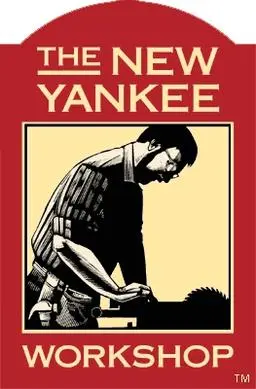I’d really love to start making something, even if it’s basic. Any tips on where to start? Tools, wood, etc?
If you are in the US, don’t trust any dimensions for wood. Buy a cheap caliper and measure to confirm. Personally, I prefer to work in metric to resist the urge to round to a nice fraction. That being said, measurements are always relative and wood is very forgiving so keep a few offcuts labeled and stored away to use as a reference.
As far as tools go: a cheap pull saw, square, hammer, and a steel straight edge will get you started. Harbor freight has some cheap entry level tools worth buying once to learn on. A drill would be my first power tool purchase if you don’t have one.
I sprang for a starrett combination square when I began my woodworking journey and it’s probably the single most useful tool I own.
It’s not necessary to have a square that precise, but knowing one part of the process is dead square is handy for figuring out where error comes from when there are issues
IF you have enough for a “full size” shop, including workbenches, a table saw, etc. Then I recommend Steve Ramsey (Woodworking for Mere Mortals). He has a lot of projects and shop tips for people just getting started. He also has a website that has a constantly updated buy list for how to build a shop on the cheap.
https://www.youtube.com/@SteveRamseyIF you are tight on space, but still want power tools, then Peter Millard (10 minute workshop) is a UK woodworker that does a lot of cabinetry and custom builds in a small basement UK shop. It’s really nice, and he even has a series of projects where he starts with just some super basic tools, and then makes slightly more complicated stuff every week.
https://www.youtube.com/@10MinuteWorkshopIF you want to try your hand at a no power tool shop (which can still be expensive to buy the stuff), then Paul Sellers is a great instructor. Most of his videos assume you don’t know anything and are just starting out.
https://www.youtube.com/@Paul.SellersFinally, Stumpy Nubs is a great channel for just general info, shop tips, and safe handling of tools. Just beware that he slips in a lot of “Just buy this one last thing from my affiliate link and it’ll solve all your problems.”
https://www.youtube.com/@StumpyNubsWood Whisperer, Tamar at 3x3 Custom, Lincoln St. Four Eyes, Izzy Swan, and a bunch of other channels are a lot of fun too, but most of them have moved into more of a “watch me make this awesome thing with my quarter million $$$ shop.”
This is a great list and a great summary. Steve Ramsey was a huge help for me starting out.
Great list at the bottom, too. Some others I recommend:
- Jonathan Katz-Moses (good testing and teaching)
- WoodWorkWeb (approachable, similar in some ways to Steve Ramsey).
Also Rex Krueger is worth having on the list https://m.youtube.com/@RexKrueger
I’m nowhere even remotely comparable to a proper furniture maker, but I can tell you some pitfalls to avoid.
Don’t cut wood without eyes, ears, and face protection. The dust, noise, or fumes will get you one day or another, if without protection. I prefer earmuffs over earplugs, but if earplugs then use the ones which tether both ends together. For a face mask, I like low-profile half-masks like this one: https://www.kleintools.com/catalog/respirators/p100-half-mask-respirator-sm
Resist the urge to dive into woodworking by starting with reclaimed wood. For example, pallets are a cheap/free source of material, but it’s a hodge-podge of different varieties, all riddled with nail holes, dents, and brown stains from rusty fasteners.
That’s not to say it can’t be done, but it certainly aggravates the process if you’re just starting. I once came across a section of 2x4 recovered from a pallet, thinking that it would cut just like the pine I was used to. Instead, it wrecked two drill bits and burned a circular saw blade as well as itself. I later mailed a sample of it to the USDA Wood Identification Public Service, who informed me that it was Acer (Hard Maple). Up until then, I didn’t even know that maple came in both varieties.
It seems hard maple is tougher than
nailsdrill bits. I’m still learning.White maple is my go-to for projects I want to keep. I love how clean it is and the large curvy grain patterns. Titanium bits and saw blades help and getting your saw blade sharpened after a couple of large projects is a good idea but you’re going to be burning through it a lot of the time even with high quality brand new cutting tools. I leave an 8th extra on and bring it down with a belt sander to deal with the burn marks. Downsize drill bits by one size and use a file for holes that you will be able to see into.
If you use reclaimed wood don’t assume all of the metal has been removed. Sometimes nails and screws break instead of working out and that can be easy to miss especially for someone checking a large amount of wood. If a saw blade hits a nail you potentially have a very dangerous projectile. Run a magnet over the wood while you’re marking your cuts to make sure. If you’re going to be working with reclaimed wood a lot a wand style metal detector is a good investment.
The funny thing is that a few months ago, I bought a wand metal detector at a ham radio swap meet for $20, as a gag. Now you’re telling me that it was actually a prudent investment toward my woodworking projects??
Win!
Why specifically tethered earplugs?
So that if one works it’s way out it doesn’t fall onto your freshly spread glue or bounce into a spinning saw blade.
This might be true, although I do it mostly so I can remove the earplugs and rest them around my neck if someone needs to talk to me.
The best PPE are the ones which have the fewest barriers toward using. Even the minor annoyance of having to set down untethered earplugs is best avoided, if it acts as a subconscious disincentive towards using PPE. Good safety policy adapts and accommodates this aspect of human behavior.
In a home workshop, there is no OSHA, so I’m fully responsible for my own safety protocols.
Unless you’re going the hand tool purist route, the table saw is IMO the central tool in the shop. It can rip, cross-cut, and cut joinery like dados and tenons. So you want a good one with a solid fence that won’t frustrate you. I haven’t been in the market for one in a while, so my suggestions will be out of date, but I’m sure others here can help you.
When you’re starting out you’ll probably be buying your wood S4S: surfaced four sides, so it’s smooth and pretty much ready to go. This is how all the wood at the big-box hardware stores comes. Wood from specialty dealers will come rough, and you can surface it yourself with the right tools ($$$) or have them do it for you for a fee ($).
It’s probably best to start with a project in mind, even if it’s shop shelving or something that doesn’t have to be heirloom-quality.deleted by creator
If your local library is no good, you can also try Project Gutenberg: https://www.gutenberg.org/ebooks/search/?query=woodworking. Has an exhaustively detailed book on joints in particular, plus an assortment of beginners’ manuals. A lot of hand tool stuff hasn’t changed all that much in the past century.
This might not be everyones opinion but my recommendation would be to get a plunge saw as your first tool. For me it was a big revelation that everything I built in shop class looked so terrible because we werent allowed to use power tools. Cutting a straight line with a hand saw is a skill that needs a lot of practice, same for joinery with chisels etc. But a plunge saw with track will give you very straight cuts for not so much money. And IMO it can do everything a table saw can do, just not as quickly (repeated cuts etc.) But on the other hand I think it makes more sense to get a decent plunge saw that you can keep for years and still use for breaking down sheets even when you decide you prefer a table saw rather than buying a cheaper job site table saw that you outgrow after a couple of years.
This, and a miter saw.
I use my plunge saw for so many things, BUT it does have limitations. I struggle making long narrow rip cuts, and repeatable cuts can be difficult without an MFT style workbench.
It can be a lot safer, cleaner, and easier than a table saw, ESPECIALLY for large panels, but it can’t entirely replace a table saw.
I do agree with this comment, and the 10 minute workshop YouTube channel has a lot of great tips on using a plunge saw (and recommendations on less expensive versions), but just be aware that it’s not a 1-1 replacement.
I agree, of course every tool has some limitations. I think a set of parallell guides can also make the plunge saw much more versatile without breaking the bank. And the set i have also works well for narrow rip cuts, exept when the piece is really small to begin with. And as you say an MFT is great for repeated cuts. As another comment mentiones together with a mitre saw and some jigs i think you could replace a table saw functionally, but its probably not the most efficient way of doing some things.
Start with a modest goal and do some research on the tools you would need to build it. Assess the space you have available and adjust your goal and/or your tool selection accordingly. Go find those tools second-hand (Craigslist, etc.). I think just about every power tool you would need for furniture making will require calibration so learn how to do it properly and actually take the time to do it. Eye protection, a respirator, and probably hearing protection are a must. Share your work on here!
I’d recommend the following set of tools:
- Cordless drill (any major brand is fine, I like Milwaukee)
- Hand pull saw (whatever is fine)
- Set of decent chisels (Narex is great value)
- Corded circular saw (Makita 5007F is a great choice)
- Random orbital sander (DeWalt has some fairly good budget models)
- Clamps, clamps, more clamps
Most of all though, get good wood. I actually strongly recommend starting with plywood primarily if you don’t have access to quality lumber since you won’t have to do any surfacing.
On a related note, anyone got any tips on the design process? Do you guys just try to copy things that catch your eye or how do you choose what to make?
The easiest way to learn how to design furniture is to copy existing designs, then tweak them slightly to better fit your style. After a while, you’ll learn how to incorporate different designs into a nearly original piece.
Copy copy copy until you understand what you like, and what works functionally.






